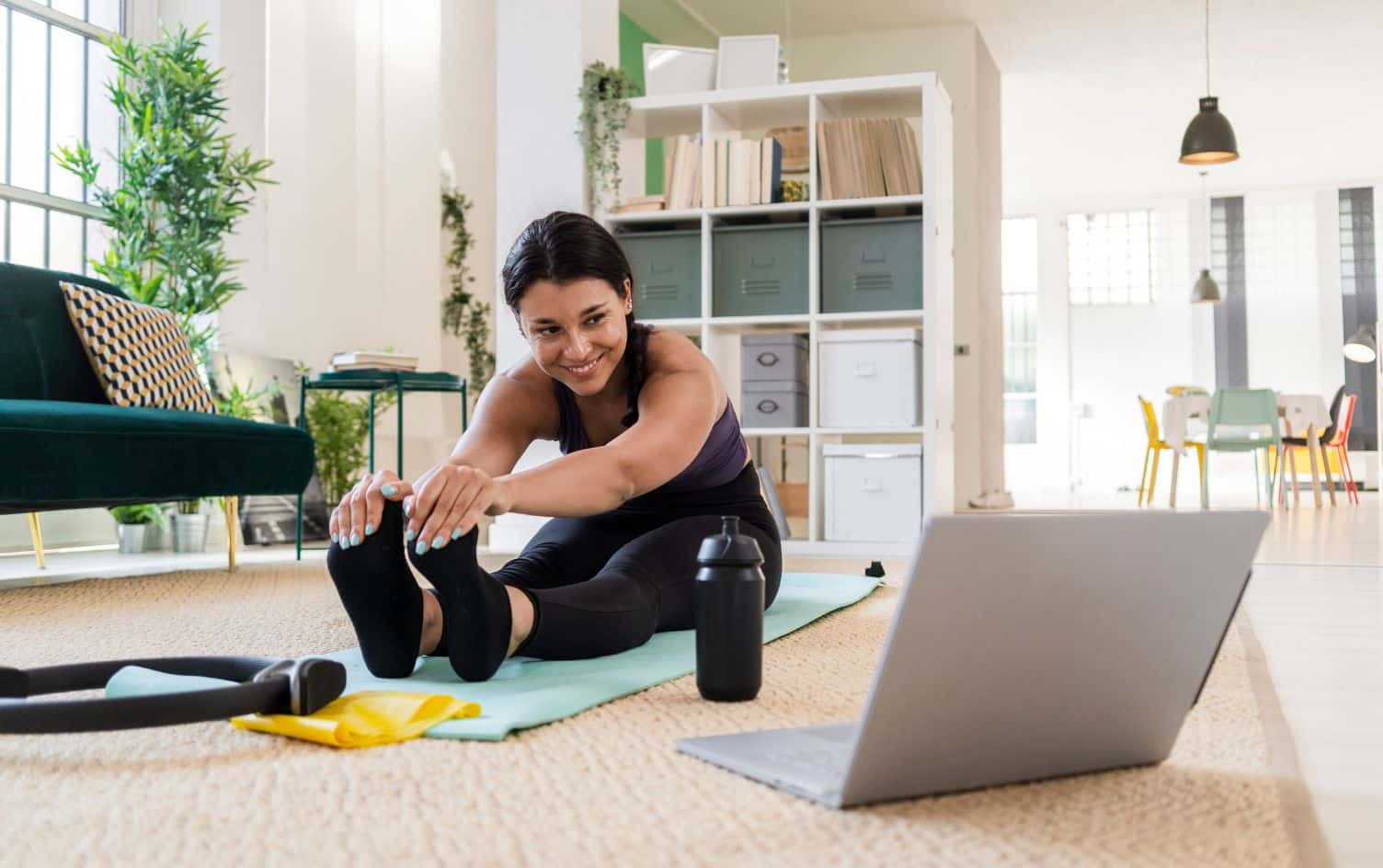Stretching is an essential part of a workout. Research shows that stretching your hamstrings, quadriceps, hip flexors, glutes, shoulders, biceps and other muscle groups helps increase range of motion, reduce stiffness and improve flexibility.
Despite the importance of stretching, myths abound. Here, we dispel five common stretching myths and give you the information you need to ace your stretching routine.
MYTH #1: YOU ONLY NEED TO STRETCH BEFORE OR AFTER A WORKOUT, NOT BOTH
Fact: It’s important to stretch before and after a workout.
Derek Carter, a Manhattan Beach, California-based personal trainer and certified strength and conditioning specialist, believes in doing dynamic stretches to warm up for a workout and static stretches to recover afterward.
Dynamic stretching involves active movements such as walking lunges and single leg squats that stretch muscles without holding the position. In contrast, static stretches like quadriceps stretches and hamstring stretches are supposed to be held for a defined period. “Dynamic stretches help warm up the muscles for a workout and static stretches keep the muscles loose after a workout,” Carter explains.
Since both kinds of stretches are important for different reasons, Carter suggests adding them to your pre- and post-workout routine.
MYTH #2: STRETCHING PREVENTS INJURIES
Fact: The research is clear: Stretching does not prevent injuries. One literature review found that stretching was not effective for reducing exercise-related injuries — and countless other studies have reported similar findings.
Although there is no solid evidence that stretching prevents injuries, Jessica Matthews, exercise physiologist and senior health and fitness advisor for the American Council on Exercise, still believes it’s important.
“A flexible muscle is less likely to become injured from a slightly extensive movement,” she says. “By increasing the range of motion in a particular joint through stretching, you may decrease the resistance on your muscles during various activities.”
MYTH #3: IT’S BEST TO HOLD EACH STRETCH FOR 30 SECONDS TO 1 MINUTE
Fact: Stop watching the clock when you are doing static stretches.
“The tighter you are, the longer you should hold the stretch,” Carter says.
Rather than holding a stretch for a certain amount of time, Carter recommends holding it until you feel a sudden release of tension and increased range of motion; go deeper into the stretch and hold it until the second release. Focusing on how muscle responds to the stretch is more effective than watching the clock, he says.
MYTH #4: STRETCHING IS ENOUGH
Fact: Stretching is more effective when it’s combined with foam rolling.
“More often than not, people with tight muscles have knots in their muscles,” Carter explains. “You might not get the same release [from stretching] that you would get if the knots were unstuck.”
Research published in the Journal of Athletic Training found that foam rolling helped ease post-workout muscle soreness; a separate study, published in the International Journal of Sports Physical Therapy, reported that foam rolling helped increase range of motion.
For maximum results, use a foam roller after a workout and stretch after “rolling out.” You’ll feel the difference, according to Carter. “Foam rolling before stretching is far better than just stretching alone,” he says.
MYTH #5: YOU DON’T NEED TO STRETCH IF YOU’RE ALREADY FLEXIBLE
Fact: You don’t get to skip pre- and post-workout stretching just because you can bend yourself into a pretzel.
“Stretching, as a practice, has many acute benefits beyond flexibility,” says Matthews.
Even the most flexible folks should make time to stretch, using dynamic stretches before a workout to prepare the muscles for exercise and static stretches as part of the post-workout cool down.
A stretching routine is important even if you don’t work out, according to Matthews.
“It helps to improve mechanical efficiency and overall functional performance,” she says. “Since a flexible joint requires less energy to move through a wider range of motion, a flexible body improves overall performance by creating more energy-efficient movements, whether you’re chasing your kids around the house or moving furniture.”




